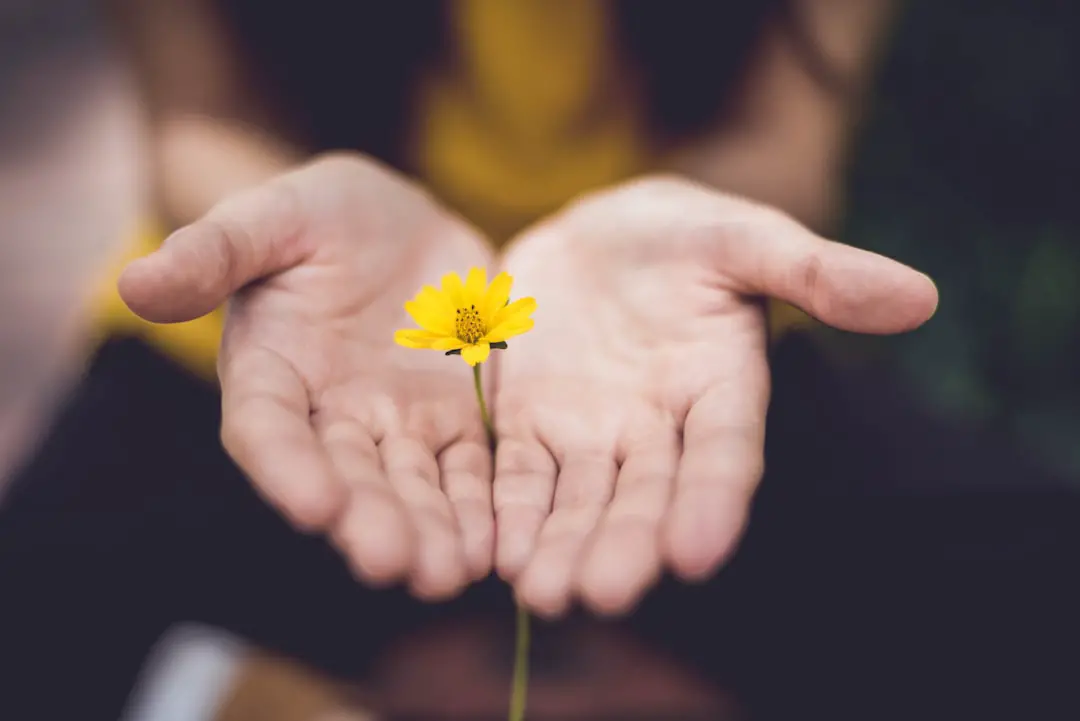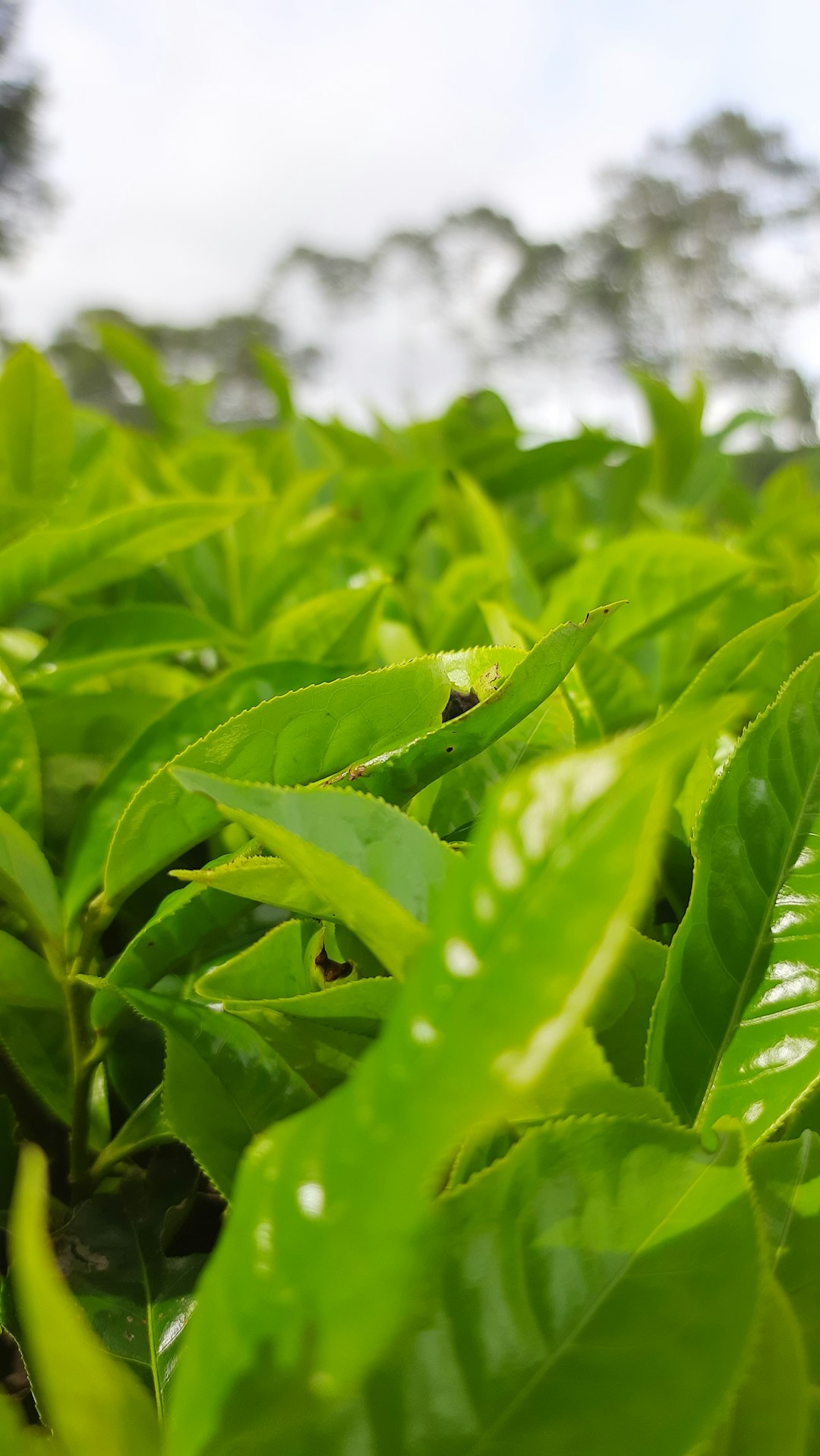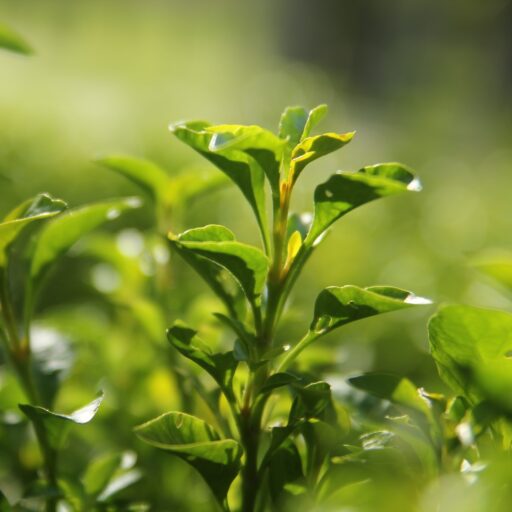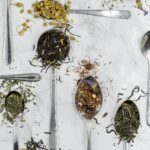Support our educational content for free when you purchase through links on our site. Learn more
7 Easy Tea Plants to Grow at Home in 2025 🌿
Have you ever dreamed of sipping a fresh cup of tea brewed from leaves you grew yourself? Imagine stepping into your garden, plucking fragrant herbs or even your very own tea bush, and steeping a brew that’s as fresh as it gets. At Growing Teas™, we’ve been there—facing the challenge of finding tea plants that don’t just survive but thrive with minimal fuss. Whether you’re a curious beginner or a seasoned green thumb, this guide reveals the 7 easiest tea plants to grow at home, complete with insider tips on soil, sunlight, pests, and even brewing secrets.
Here’s a little secret: some of the most delightful tea plants are also the hardiest. From the classic Camellia sinensis to the ever-popular lemon balm and peppermint, these plants will turn your garden into a fragrant tea haven. But beware—did you know that peppermint can take over your garden faster than you can say “tea time”? We’ll show you how to keep that in check and much more. Ready to cultivate your perfect cup? Let’s dive in!
Key Takeaways
- Lemon balm, peppermint, and chamomile are among the easiest tea plants for beginners, offering fast growth and delightful flavors.
- Camellia sinensis, the traditional tea plant, requires more care but rewards patience with authentic green and black teas.
- Proper soil acidity, sunlight, and watering are crucial for healthy tea plants; most prefer slightly acidic, well-drained soil and partial to full sun depending on the species.
- Natural pest control and companion planting help maintain a thriving, chemical-free tea garden.
- Growing your own tea supports sustainability, freshness, and a deeper connection to your brew.
- Check out our recommended seeds and plants to get started quickly:
Ready to grow your own tea garden? Your perfect cup is just a seed away!
Table of Contents
- ⚡️ Quick Tips and Facts About Easy-to-Grow Tea Plants
- 🌱 Tea Plant Origins and Growing Basics: A Leafy Backstory
- 1. Top 7 Easy Tea Plants to Grow at Home: From Camellia to Chamomile
- 2. Soil, Sunlight, and Water: The Perfect Growing Conditions for Tea Plants
- 3. Propagation Techniques: How to Grow Tea Plants from Seeds, Cuttings, and More
- 4. Common Pests and Diseases: Protecting Your Tea Garden Naturally
- 5. Harvesting and Processing Your Homegrown Tea Leaves Like a Pro
- 6. Creating a Pollinator-Friendly Tea Garden: Boost Growth and Save the Planet
- 7. Adapting Your Tea Garden to Weird Weather: Tips for Hot, Dry, and Unpredictable Climates
- 8. Companion Plants That Thrive with Tea: Boost Flavor and Growth Naturally
- 9. Brewing the Best Cup: Using Your Homegrown Tea Leaves for Maximum Flavor
- Conclusion: Your Journey to Growing Easy and Delicious Tea Plants
- Recommended Links for Tea Plant Enthusiasts
- FAQ: Your Burning Questions About Growing Tea Plants Answered
- Reference Links: Trusted Sources for Tea Plant Growing
⚡️ Quick Tips and Facts About Easy-to-Grow Tea Plants
Welcome to the lush world of tea gardening! If you’re eager to grow your own tea plants but don’t want to wrestle with finicky species, you’re in the right place. At Growing Teas™, we’ve cultivated and tasted our way through dozens of tea plants to find the easiest, most rewarding varieties for beginners and seasoned growers alike.
Here’s a quick cheat sheet to get you started:
| Tea Plant | Ease of Growth | Sunlight Needs | Water Needs | Flavor Profile | Perennial/Annual | Special Notes |
|---|---|---|---|---|---|---|
| Camellia sinensis | 7/10 | Partial Shade | Moderate | Classic green/black tea | Perennial | Requires acidic soil, patience needed |
| Lemon Balm | 10/10 | Full Sun | Moderate | Citrusy, refreshing | Perennial | Spreads vigorously, easy to contain |
| Peppermint | 9/10 | Partial Shade | High | Minty, cooling | Perennial | Can be invasive, best in containers |
| Chamomile | 8/10 | Full Sun | Low-Moderate | Apple-like, floral | Annual | Self-seeds, great for beginners |
| Lemongrass | 8/10 | Full Sun | Moderate | Lemon citrus | Perennial (zones 9+) | Needs winter protection in cold zones |
| Anise Hyssop | 9/10 | Full Sun | Moderate | Licorice-like | Perennial | Attracts pollinators, easy to grow |
| Stevia | 7/10 | Full Sun | Moderate | Sweetener | Perennial (zones 9+) | Sensitive to frost, great sugar substitute |
Pro Tip: Start with lemon balm or peppermint if you want instant gratification and minimal fuss. For the classic tea experience, Camellia sinensis is your go-to, but it demands more patience and care.
Want to dive deeper? Check out our 15 Expert Tips for Tea Cultivation Beginners 🌱 (2025) for a comprehensive guide on nurturing your tea plants from seedling to cup.
🌱 Tea Plant Origins and Growing Basics: A Leafy Backstory
Before you dig into the dirt, let’s sip on some history and biology. The tea plant, Camellia sinensis, is the cornerstone of traditional teas—green, black, oolong, and white. Native to East Asia, it thrives in acidic soils with good drainage and prefers partial shade to filtered sunlight. Growing this plant at home is a rewarding challenge, but don’t worry—we’ll also explore easier herbal tea plants that bring their own charm.
The Herbal Tea Revolution
Not all teas come from Camellia sinensis. Herbal teas, or tisanes, come from a variety of plants—mint, chamomile, lemongrass, and more—that are often easier to grow and faster to harvest. These plants have been cherished for centuries for their medicinal properties and delightful flavors.
Why Grow Your Own Tea?
- Freshness: Nothing beats the taste of freshly picked leaves.
- Control: Know exactly what’s in your cup—no pesticides or additives.
- Sustainability: Reduce packaging waste and carbon footprint.
- Therapeutic: Gardening is a proven stress-buster and mood enhancer.
For a fascinating dive into tea’s cultural journey, visit our History of Tea category.
1. Top 7 Easy Tea Plants to Grow at Home: From Camellia to Chamomile
Ready to meet your new leafy friends? Here’s our curated list of easy-to-grow tea plants that anyone can cultivate, whether you have a sprawling garden or a sunny windowsill.
| Rank | Plant Name | Botanical Name | Growth Habit | Flavor Notes | Best For |
|---|---|---|---|---|---|
| 1 | Lemon Balm | Melissa officinalis | Perennial herb | Bright, lemony | Herbal teas, calming blends |
| 2 | Peppermint | Mentha x piperita | Perennial herb | Cool, minty | Digestive teas, refreshing iced |
| 3 | Chamomile | Matricaria chamomilla | Annual herb | Sweet, apple-like | Relaxing bedtime teas |
| 4 | Lemongrass | Cymbopogon citratus | Perennial grass | Citrusy, lemon | Detox teas, digestive aids |
| 5 | Anise Hyssop | Agastache foeniculum | Perennial herb | Licorice, sweet | Flavorful blends, pollinator-friendly |
| 6 | Stevia | Stevia rebaudiana | Perennial herb | Sweet, sugar-like | Natural sweetener in teas |
| 7 | Camellia sinensis | Camellia sinensis | Evergreen shrub | Classic tea flavor | Traditional green/black teas |
Growing Highlights
- Lemon Balm: Thrives in full sun to partial shade, spreads quickly, and is drought tolerant once established. Great for beginners.
- Peppermint: Loves moist soil and partial shade. Beware—it’s a vigorous spreader! Best grown in pots.
- Chamomile: Prefers full sun and well-drained soil. Self-seeds easily, so expect volunteers next season.
- Lemongrass: Needs warm temperatures and full sun. In colder climates, grow in containers and bring indoors during winter.
- Anise Hyssop: Attracts bees and butterflies, making your garden a buzzing paradise.
- Stevia: Requires warmth and protection from frost. Leaves are intensely sweet—perfect for DIY tea blends.
- Camellia sinensis: Needs acidic soil (pH 5-6), filtered sunlight, and patience. Growing your own tea bush is a rewarding long-term project.
Want to explore more herbal tea plants? Our Herbal Tea Planting category is packed with guides and tips.
2. Soil, Sunlight, and Water: The Perfect Growing Conditions for Tea Plants
Growing tea plants is like crafting a delicate symphony—soil, sunlight, and water must harmonize perfectly. Here’s how to set the stage for your tea garden’s success.
Soil Essentials
- pH: Most tea plants prefer slightly acidic soil, between 5.0 and 6.5. Camellia sinensis is especially picky here.
- Drainage: Well-drained soil is a must to prevent root rot. Amend heavy clay with organic matter like compost or peat moss.
- Nutrients: Tea plants are moderate feeders. Use balanced fertilizers rich in nitrogen, potassium, and phosphorus.
Sunlight Requirements
| Plant | Sunlight Preference |
|---|---|
| Camellia sinensis | Partial shade (filtered) |
| Lemon Balm | Full sun to partial shade |
| Peppermint | Partial shade |
| Chamomile | Full sun |
| Lemongrass | Full sun |
| Anise Hyssop | Full sun |
| Stevia | Full sun |
Watering Wisdom
- Keep soil consistently moist but not soggy.
- Newly planted tea bushes need frequent watering until established.
- Mulching helps retain moisture and regulate soil temperature.
Pro Tip from Growing Teas™:
We once had a batch of Camellia sinensis seedlings that sulked under full sun—moving them to a spot with dappled shade revived them within weeks. Lesson learned: observe your plants and adjust their environment accordingly!
For detailed soil and watering tips, check out our Green Tea Cultivation series.
3. Propagation Techniques: How to Grow Tea Plants from Seeds, Cuttings, and More
Propagation is where the magic begins. Whether you want to start from scratch or multiply your existing plants, here’s how to do it right.
Seed Propagation
- Camellia sinensis: Seeds need to be fresh and soaked overnight. Sow in acidic, well-draining soil. Germination can take 2-3 weeks.
- Herbal plants: Most herbs like lemon balm and chamomile are easy from seed. Start indoors 6-8 weeks before last frost or direct sow after frost.
Cuttings
- Semi-hardwood cuttings work well for peppermint, lemon balm, and anise hyssop.
- Take 4-6 inch cuttings in late spring or early summer.
- Dip in rooting hormone and plant in moist, well-draining medium.
- Keep humidity high until roots develop (2-4 weeks).
Division
- Best for mint and lemon balm, which spread via rhizomes.
- Dig up clumps in early spring or fall.
- Separate roots and replant immediately.
Layering
- Anise hyssop and some mints root easily from layered stems.
- Bend a low stem to the ground, cover with soil, and wait for roots to form.
Pro Grower Tip:
We once propagated anise hyssop by layering near our patio. The scent was so intoxicating that neighbors started asking for cuttings—talk about a fragrant success!
For more propagation secrets, explore our Herbal Tea Planting category.
4. Common Pests and Diseases: Protecting Your Tea Garden Naturally
No garden is without its challenges, but tea plants are generally hardy. Here’s what to watch out for and how to keep your tea garden healthy without harsh chemicals.
Common Pests
| Pest | Plants Affected | Symptoms | Natural Control Methods |
|---|---|---|---|
| Aphids | Most tea plants | Sticky residue, curled leaves | Introduce ladybugs, neem oil spray |
| Spider Mites | Camellia sinensis, herbs | Yellow speckling, webbing | Increase humidity, insecticidal soap |
| Whiteflies | Peppermint, lemon balm | Leaf yellowing, wilting | Yellow sticky traps, neem oil |
| Slugs and Snails | Chamomile, lemongrass | Holes in leaves | Beer traps, diatomaceous earth |
Diseases
- Root rot: Caused by overwatering or poor drainage. Ensure soil drains well.
- Leaf spot: Fungal infections causing brown spots. Remove affected leaves and improve air circulation.
- Powdery mildew: White powdery coating on leaves. Treat with baking soda spray or sulfur-based fungicides.
Organic Defense Tips
- Encourage beneficial insects like ladybugs and lacewings.
- Use companion planting with marigolds or garlic to deter pests.
- Maintain clean garden hygiene by removing debris and pruning overcrowded branches.
Our experience at Growing Teas™ shows that a balanced ecosystem is your best defense. For more on pest management, see our Herbal Tea Planting guides.
5. Harvesting and Processing Your Homegrown Tea Leaves Like a Pro
The moment of truth: harvesting your tea leaves! Timing and technique can make or break your brew.
When to Harvest
- Camellia sinensis: Pick young, tender leaves and buds in spring and summer. The first flush (early spring) yields the highest quality.
- Herbal plants: Harvest leaves before flowering for best flavor; flowers can also be harvested for chamomile or lavender.
- Lemongrass: Cut stalks when they reach 12 inches or more.
Harvesting Tips
- Use clean, sharp scissors or pruning shears.
- Harvest in the morning after dew dries but before midday heat.
- Avoid harvesting more than 1/3 of the plant at a time to allow regrowth.
Processing Basics
| Tea Type | Processing Steps |
|---|---|
| Green Tea | Wither, steam or pan-fry, roll, dry |
| Black Tea | Wither, roll, oxidize, dry |
| Herbal Teas | Dry leaves/flowers in shade, store in airtight containers |
Drying Methods
- Air drying on screens or racks in a warm, ventilated area.
- Oven drying at low temperatures (95-110°F) for faster results.
- Dehydrators for consistent drying.
Pro Tip:
We once left a batch of chamomile flowers to dry in direct sun and ended up with a bitter brew. Lesson learned: shade drying preserves delicate flavors and essential oils.
For detailed processing tutorials, visit our DIY Tea Blending category.
6. Creating a Pollinator-Friendly Tea Garden: Boost Growth and Save the Planet
Did you know your tea plants can be part of a buzzing ecosystem that supports bees, butterflies, and other pollinators? A pollinator-friendly tea garden not only helps the planet but also improves your plants’ health and yield.
Why Pollinators Matter
- Pollinators increase flower fertilization and seed production.
- They contribute to biodiversity and ecosystem resilience.
- Many tea herbs, like anise hyssop and lavender, attract beneficial insects.
How to Attract Pollinators
- Plant native flowering herbs alongside your tea plants.
- Provide water sources like shallow dishes with stones.
- Avoid pesticides and herbicides.
- Include diverse bloom times for continuous food supply.
Best Pollinator-Friendly Tea Plants
| Plant | Pollinator Appeal |
|---|---|
| Anise Hyssop | Bees, butterflies |
| Lavender | Bees |
| Lemon Balm | Bees, hummingbirds |
| Chamomile | Bees, hoverflies |
Growing Teas™ Anecdote:
Our garden’s anise hyssop patch became a favorite hangout for bumblebees and hummingbirds, turning tea time into a wildlife spectacle!
For more on sustainable gardening, check out our Herbal Tea Planting category.
7. Adapting Your Tea Garden to Weird Weather: Tips for Hot, Dry, and Unpredictable Climates
Climate change is shaking up gardening norms, but your tea garden can thrive with a little adaptation.
Challenges
- Heat stress causing leaf scorch.
- Drought leading to stunted growth.
- Unpredictable frosts damaging tender plants.
Smart Strategies
- Mulch heavily to retain soil moisture and regulate temperature.
- Use drip irrigation for efficient watering.
- Choose drought-tolerant varieties like lemongrass and rosemary.
- Provide shade cloths during extreme heat.
- Plant in raised beds or containers for better control.
Growing Teas™ Tip:
In a particularly dry summer, we installed a simple drip irrigation system and saw our lemon balm and peppermint bounce back with vigor. It’s a game-changer!
For more climate-smart tips, explore our Green Tea Cultivation category.
8. Companion Plants That Thrive with Tea: Boost Flavor and Growth Naturally
Companion planting is like matchmaking for your garden—some plants just get along better and help each other thrive.
Ideal Companions for Tea Plants
| Tea Plant | Companion Plants | Benefits |
|---|---|---|
| Camellia sinensis | Azaleas, rhododendrons | Similar soil acidity preferences |
| Lemon Balm | Basil, chamomile | Pest deterrence, flavor enhancement |
| Peppermint | Marigold, catnip | Pest control, attracts pollinators |
| Chamomile | Lavender, lemon balm | Enhances growth and flavor |
| Lemongrass | Ginger, turmeric | Shared tropical growing conditions |
Benefits of Companion Planting
- Natural pest control.
- Improved soil health.
- Enhanced flavors through plant interactions.
- Increased biodiversity.
Growing Teas™ Story:
We planted marigolds near our peppermint patch, and aphid problems dropped dramatically. Plus, the marigolds added a splash of color to our tea garden!
For more on blending flavors and companion planting, visit our DIY Tea Blending category.
9. Brewing the Best Cup: Using Your Homegrown Tea Leaves for Maximum Flavor
You’ve grown, harvested, and dried your tea leaves—now it’s time to brew a cup that sings!
Brewing Basics
- Use about 1 teaspoon of dried leaves per 8 oz (240 ml) of water.
- Water temperature varies by tea type:
- Green tea: 160-180°F (70-80°C)
- Black tea: 200-212°F (93-100°C)
- Herbal teas: boiling water (212°F / 100°C)
- Steep times:
- Green tea: 1-3 minutes
- Black tea: 3-5 minutes
- Herbal teas: 5-10 minutes
Flavor Boosters
- Add fresh herbs like mint or lemon balm for a zesty twist.
- Sweeten with stevia or honey.
- Experiment with blends—try chamomile and lavender for a calming night tea.
Brewing Tips from Growing Teas™
- Always use fresh, filtered water.
- Avoid over-steeping to prevent bitterness.
- Store dried leaves in airtight containers away from light and moisture.
For recipes and blending ideas, check out our DIY Tea Blending category.
We’ve brewed up a storm of knowledge here, but there’s always more to discover on your tea-growing journey. Ready to get your hands dirty? Your perfect cup awaits!
Conclusion: Your Journey to Growing Easy and Delicious Tea Plants

Wow, what a journey! From the humble lemon balm to the classic Camellia sinensis, we’ve explored the best easy-to-grow tea plants, their ideal growing conditions, propagation secrets, pest defenses, and even how to brew the perfect cup. Whether you’re a newbie looking for quick wins with peppermint or a tea connoisseur ready to nurture your own tea bush, there’s something here for everyone.
Remember: Growing tea is as much about patience and observation as it is about planting. Your garden will teach you what it needs—listen closely, adjust, and enjoy the process. And if you’re worried about weird weather or pesky pests, our tips will help you keep your tea plants thriving year-round.
So, what’s next? Grab some seeds or cuttings, prepare your soil, and start your tea garden adventure today. Your future self (and your taste buds) will thank you!
Recommended Links for Tea Plant Enthusiasts
Ready to get growing? Here are some trusted products and resources to kickstart your tea garden:
- Lemon Balm Seeds:
Amazon | Etsy - Peppermint Plants and Seeds:
Amazon | Etsy - Camellia sinensis Tea Plant:
Amazon | Plant Delights Nursery - Herbal Tea Growing Kit:
Amazon - Books on Tea Gardening:
FAQ: Your Burning Questions About Growing Tea Plants Answered

What are the best tea plants for beginners to grow?
Lemon balm, peppermint, and chamomile top the list for beginners. They’re forgiving, fast-growing, and don’t require specialized soil or climate conditions. Lemon balm, in particular, is a superstar for its vigorous growth and delightful citrus flavor. These plants also propagate easily from cuttings or seeds, giving you quick satisfaction.
Read more about “15 Expert Tips for Tea Cultivation Beginners 🌱 (2025)”
How much maintenance do tea plants require to thrive?
Maintenance varies by plant:
- Camellia sinensis requires moderate care: acidic soil, partial shade, and regular pruning. It’s a long-term commitment but rewarding.
- Herbal tea plants like peppermint and lemon balm need minimal maintenance—regular watering, occasional pruning, and containment to prevent spreading.
- Pest management is generally straightforward with natural controls. Mulching and soil care are key to healthy plants.
Read more about “How Much Maintenance Do Tea Plants Really Need to Thrive? 🌿 (2025)”
Can I grow tea plants indoors or do they need to be outside?
Yes, you can grow many tea plants indoors, especially herbs like lemon balm, peppermint, and stevia. They need:
- Bright, indirect sunlight (a south-facing window is ideal).
- Consistent moisture without waterlogging.
- Good air circulation to prevent fungal issues.
Camellia sinensis can be grown indoors but requires more space and humidity control. For colder climates, growing tea plants in containers that move outdoors in summer and indoors in winter is a smart strategy.
What are the most disease-resistant tea plants for a home garden?
Herbal tea plants like lemon balm, chamomile, and anise hyssop tend to be more disease-resistant due to their hardy nature and fewer fungal issues. Camellia sinensis can be susceptible to root rot and leaf spot if conditions aren’t ideal, so good drainage and air circulation are crucial.
Read more about “10 Best Tea Plant Varieties for American Gardens (2025) 🍃”
How do I prevent my peppermint from taking over the garden?
Peppermint is a notorious spreader! To keep it in check:
- Grow it in pots or containers rather than open garden beds.
- Use root barriers if planting in the ground.
- Regularly prune and harvest to control growth.
Read more about “Grow Your Own Herbal Tea: 7 Essential Tips for Success 🌿 …”
Can I blend my own tea using homegrown plants?
Absolutely! Blending herbs like lemon balm, chamomile, peppermint, and stevia lets you customize flavors and health benefits. Dry your leaves properly and experiment with ratios. Our DIY Tea Blending category has fantastic recipes and tips.
Read more about “How Long Does It Take to Grow Tea? 🌱 The Ultimate 2025 Guide”
Reference Links: Trusted Sources for Tea Plant Growing
- National Gardening Association: 10 Best Plants for Tea
- Chestnut Herbs: How to Grow an Herbal Tea Garden
- Eartheasy: Grow Your Own Herbal Teas
- Traditional Medicinals Official Site
- Yogi Tea Official Site
- Plant Delights Nursery: Camellia sinensis
- Growing Teas™ Green Tea Cultivation
- Growing Teas™ Herbal Tea Planting
- Growing Teas™ DIY Tea Blending
- Growing Teas™ History of Tea
Ready to start your tea garden? Remember, every great cup begins with a single leaf. Happy growing and happy sipping! 🍵🌿



